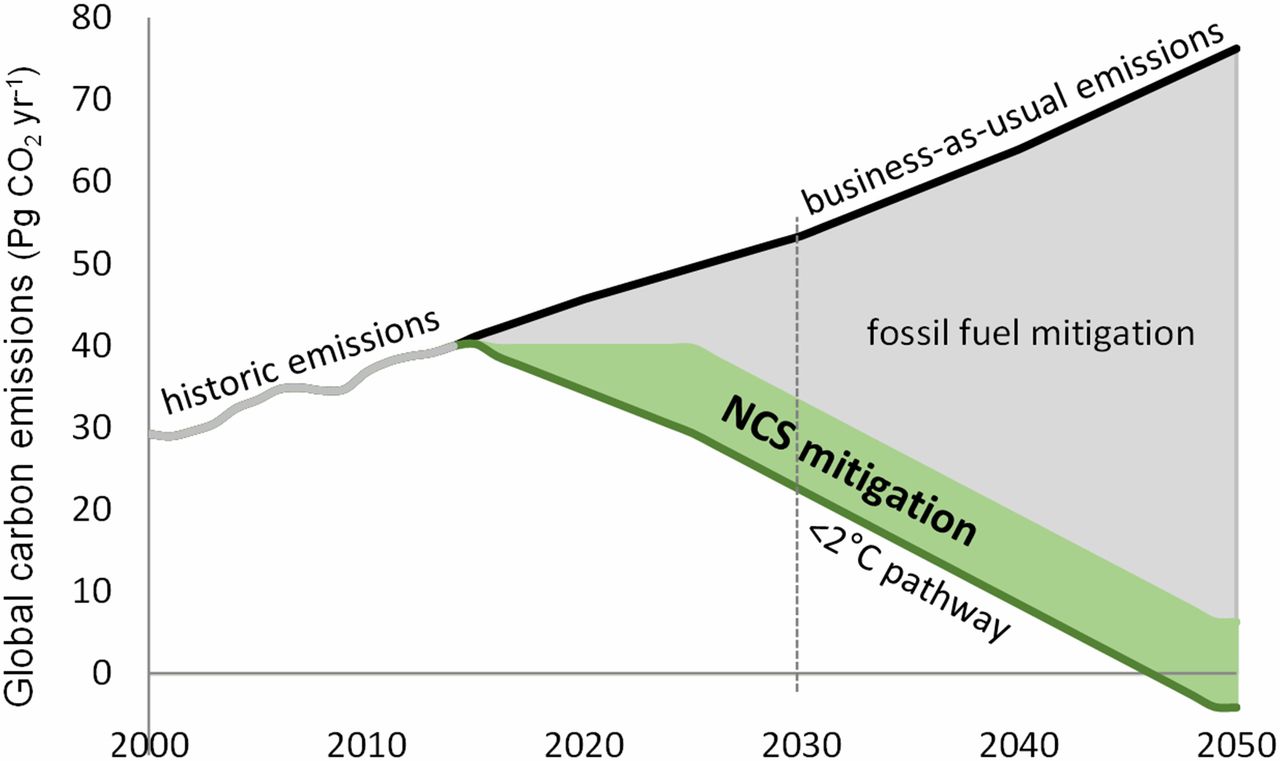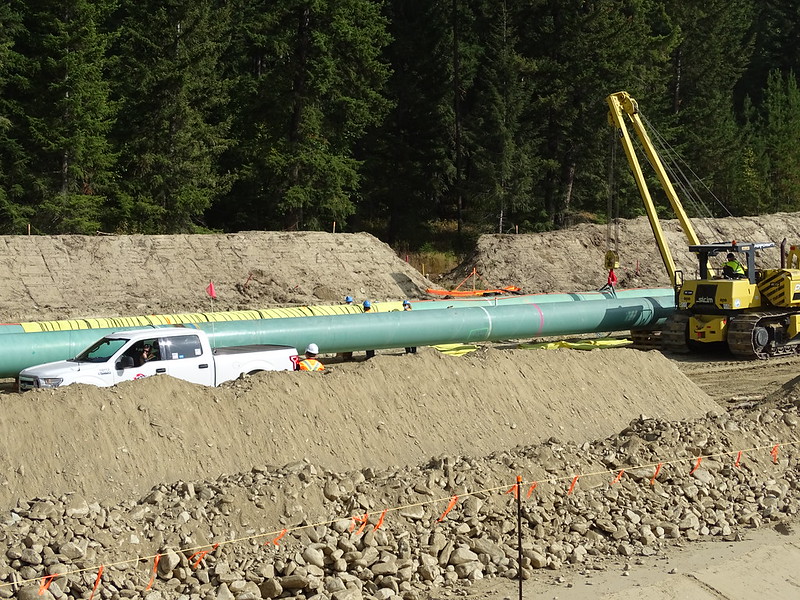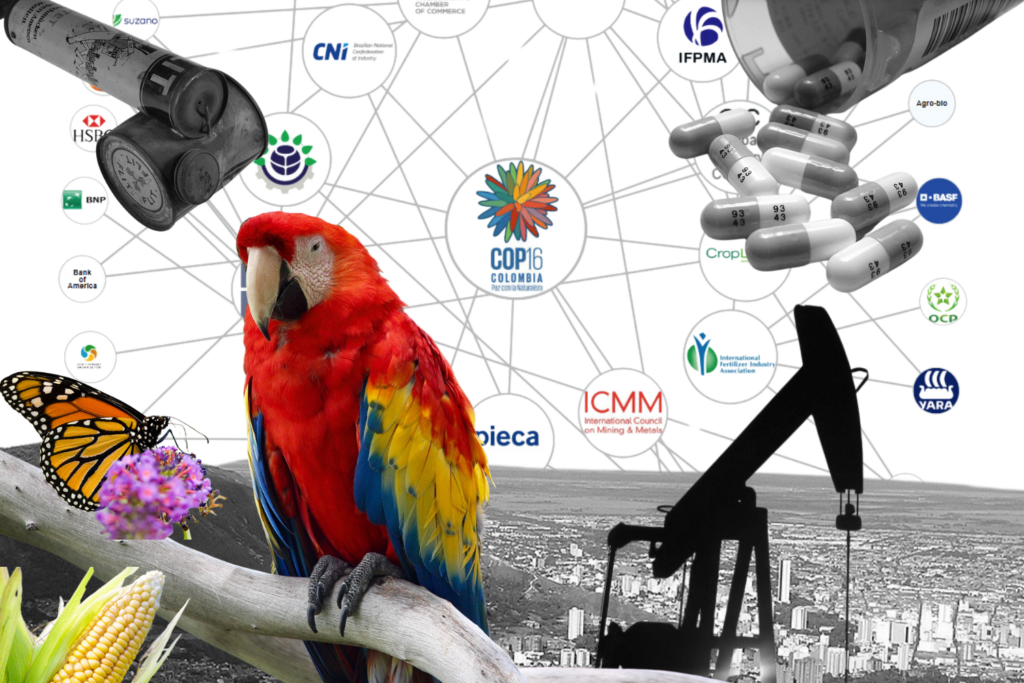A recently published report has called into question the efficacy of land-based solutions being pushed by NGOs and major oil companies alike to mitigate climate change.
Natural climate solutions (NCS) — including programs referred to as reducing emissions from deforestation and forest degradation (REDD+) — represent a body of land-based approaches for capturing carbon from the atmosphere and reducing greenhouse gas emissions. NCS proposals range from enhanced forest management to conservation agriculture and ecosystem restoration.
Conservation organizations such as the World Resources Institute, The Nature Conservancy (TNC) and the World Business Council on Sustainable Development have touted NCS as a cost-effective tool in mitigating climate change. Last year, a coalition of 12 organizations, including TNC and the UN–REDD program, launched Nature4Climate, a campaign initiative aimed at generating more awareness and funding for NCS solutions.
Oil companies have been trumpeting NCS and REDD+ initiatives as a way to offset carbon emissions for decades. In the last year, major oil corporations such as BP, Shell, Norway’s Equinor, and Italy’s Eni have ramped up their messaging around NCS as pressure has mounted to respond to climate change.
But a pair of analysts say the feasibility of such solutions at scale is murky. Authors Chris Lang, founder of REDD-Monitor, and Simon Counsell, executive director of the Rainforest Foundation UK,* claim the potential efficacy of the solutions themselves may be overblown.
The ‘Wishful Thinking’ of NCS
There have been a slew of scientific papers over the years pointing to NCS as a useful tool in removing carbon dioxide from the environment. In their critique, Lang and Counsell have zeroed in on a TNC-led 2017 paper published in the scientific journal Proceedings of the National Academy of Sciences (PNAS). The paper’s authors estimate NCS “can provide 37 percent of cost-effective CO2 mitigation needed through 2030” needed to stay below the 2° Celsius threshold of global warming.

“Contribution of natural climate solutions (NCS) to stabilizing warming to below 2 °C. Historical anthropogenic CO2emissions before 2016 (gray line) prelude either business-as-usual (representative concentration pathway, scenario 8.5, black line) or a net emissions trajectory needed for >66% likelihood of holding global warming to below 2 °C (green line). The green area shows cost-effective NCS (aggregate of 20 pathways), offering 37% of needed mitigation through 2030, 29% at year 2030, 20% through 2050, and 9% through 2100.” Credit: Griscom et al. 2017
It outlines over 20 pathways for reducing carbon in the atmosphere through NCS, ranging from converting pastureland to forests, avoiding deforestation in areas, and implementing changes to the logging industry to reduce output, among others.
The sheer scale of NCS needed to achieve those results, without taking into consideration the policy implications of such proposals, makes the potential of NCS purely theoretical, according to Lang and Counsell.
“It’s not feasible,” Lang said. “But even if it was feasible, we’re talking about covering an area the size of India. It’s a vast area of land. And so it’s going to have enormous social and environmental impacts. That’s something that [the researchers] are just brushing under the carpet.”
Counsell and Lang have dubbed some of the assumptions made in the report as nothing more than “wishful thinking.” One of their main critiques is where to find the land suitable for reforestation or avoided deforestation. The TNC report estimates that hundreds of millions of hectares of land will be needed for NCS to effectively mitigate climate change.
“There’s obviously an implicit assumption in there that somehow this land can be released from whoever is using it or owning it, or that it is freely available somewhere,” Counsell said. “That immediately raises questions. Whose land is this? How are we going to remove them? Are they going to be compensated? Bearing in mind that you could be talking about tens of millions of people who would somehow have to sacrifice their land for afforestation purposes.”
Today, we are supporting the launch of #Nature4Climate – a new campaign to help raise the profile of nature as a critical response to climate change.
We need your help to give nature a voice. FOLLOW @Nature4Climate ➡️ pic.twitter.com/cWDXKP1JlA
— The Nature Conservancy (@nature_org) June 20, 2018
In response to some of their criticisms, a spokesperson from The Nature Conversancy said the proposals are “fully compatible with a world in which people and nature thrive.”
“It is possible and essential to pursue all the NCS pathways in ways that are both respectful of biodiversity and inclusive of those who depend on land for their livelihoods,” the spokesperson said.
Big Oil Greenwashing?
The TNC paper’s claim that NCS can account for up to 37 percent of CO2 mitigation by 2030 has garnered quite a lot of attention by media, conservation organizations, and others as a “forgotten solution” to climate change.
A movie trailer-style video by Nature4Climate about “the forgotten solution.”
“The problem is the messaging that’s being put out there by the likes of The Nature Conservancy and Nature4Climate, which has been picked up by the oil companies and the World Business Council on Sustainable Development and so forth, has been completely separated from the underlying analysis,” Counsell said. “It’s based on these massive assumptions, most of which are completely otherworldly and cannot be fulfilled. And therefore, it is purely a theoretical exercise.”
“It just becomes a sound bite,” he added.
While oil companies like Shell tout claims of “invest[ing] in natural ecosystems as part of its strategy to act on global climate change,” a March 2019 report found that some of these same corporations are spending millions lobbying against climate regulations and in support of oil and gas expansion through industry trade groups.
Lang and Counsell fear that the lofty promises made by researchers around NCS — such as those made in the 2017 paper — tend to steer the conversation away from other, more direct approaches to reducing carbon emissions such as reeling in fossil fuel burning.
They’re not alone in their concerns about NCS. Other researchers have noted that the public-facing conversations around NCS tend to leave out other emissions-reducing approaches aimed at the energy industry. That fact actually prompted a team of researchers to publish a paper in 2019 in the journal Science entitled “Natural climate solutions are not enough.”
Christa Anderson, global science research fellow at WWF and co-author of the Science paper, said she and her colleagues wrote the paper in hopes of clarifying that the benefits of natural climate solutions “really do not decrease the imperative for mitigation in the energy and industrial sectors.”
“Support for natural climate solutions, though laudable, doesn’t replace the need to dramatically decrease our energy and industry emissions,” she added. “Both natural climate solutions — things like planting trees and practicing sustainable agriculture — along with reducing emissions in the energy and industry sector are needed.”
A spokesperson from The Nature Conversancy agreed with Anderson’s assessment. “NCS by itself is no silver bullet. It’s not a matter of NCS or reducing fossil fuel emissions; the world needs both,” the spokesperson said. “But with [less than] 3 percent of all climate funding currently going to land use solutions, we think it deserves a much bigger place in the conversation.”
Counsell and Lang take the argument a step further. They claim that major oil companies have seized on the opportunity to promote NCS initiatives as a means to greenwash themselves while continuing to drill for fossil fuels.
“As long as the oil industry can say, look we’re doing something, we’re supporting tree planting, it just diverts the conversation from the need to leave fossil fuels in the ground,” Lang said, adding that major oil companies are incentivized to move the conversation away from fossil fuel reductions.
“This whole discussion about natural climate solutions is exactly what the oil industry wants. It’s handing them the perfect PR exercise on a plate,” he said.
Shell, BP, and Equinor, all three of which have made commitments towards supporting NCS, have just received a greenlight to begin new offshore drilling in Brazil’s Santos Basin.
*Updated 7/8/2019: This story has been updated to more accurately describe Lang’s and Counsell’s titles.
Main image: A solitary rainforest tree remains standing in a recently planted palm oil plantation on former orangutan habitat inside the PT Karya Makmur Abadi Estate II palm oil concession in Central Kalimantan, Malaysia. Credit: © Ulet Ifansasti / Greenpeace
Subscribe to our newsletter
Stay up to date with DeSmog news and alerts







